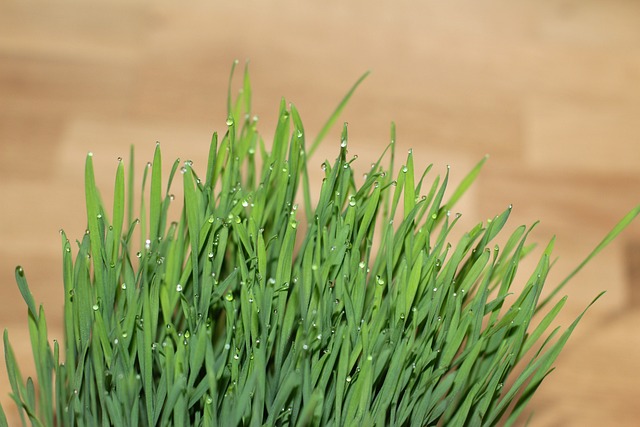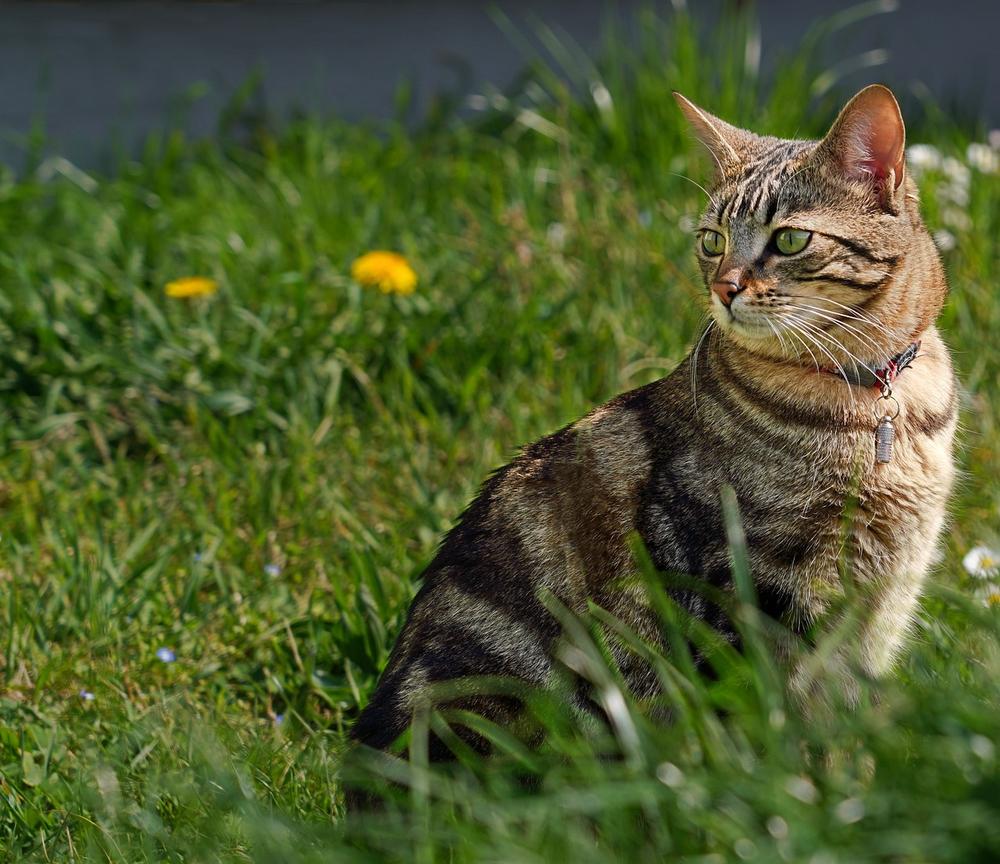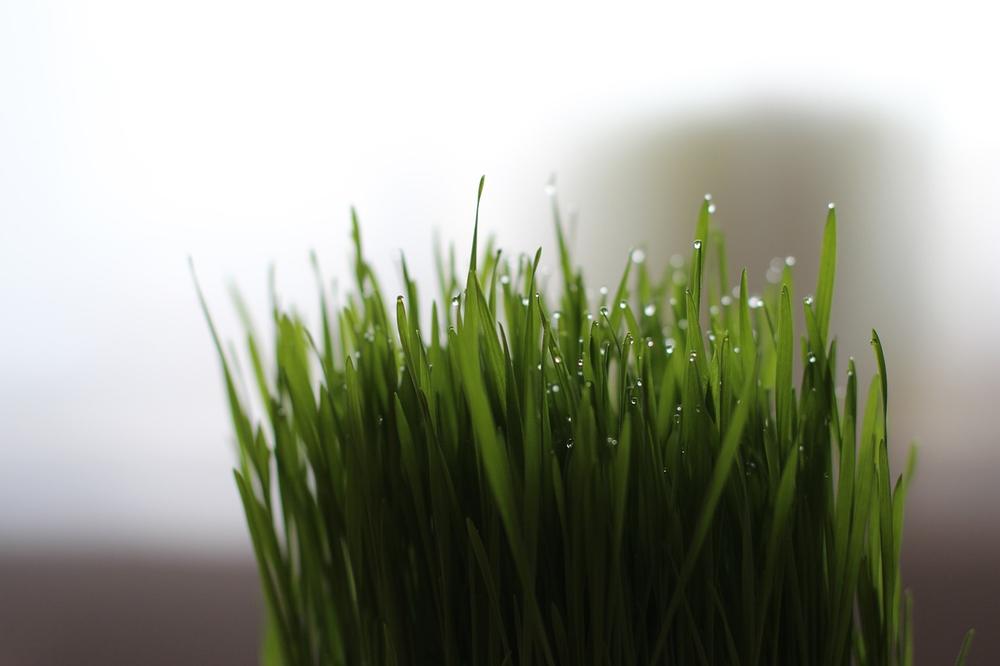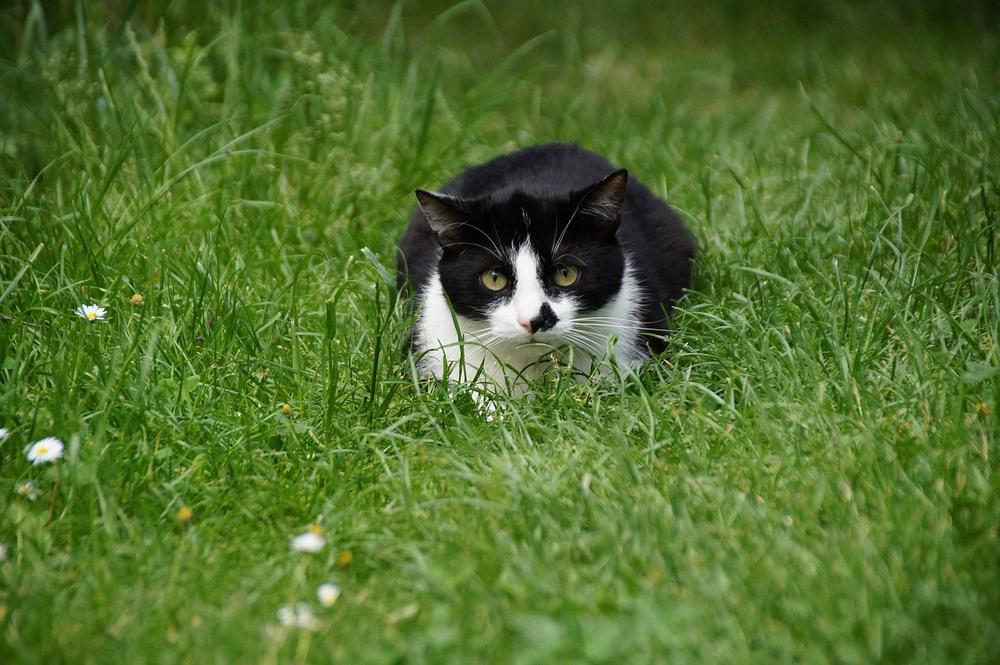Cat Grass VS Wheat Grass: Which One Is Better for Cats?

So you're a cat parent, huh?
You want the very best for your furry friend.
But here's the thing...choosing between cat grass and wheat grass can be a real head-scratcher. 😺
I hear you, I've been there too.
You want to give your cat something that will make them purr with joy and improve their all in all well-being.
Well, fret not my friend, because in this I Care for Cats guide, I'll help you navigate the cat grass vs wheat grass debate.
Trust me, your cat will thank you.
Don't wait, let's dig in now before you miss out on something great.
Which Grass Option is Best for Your Cat's Health?
Here are 10 grass options for your cat's health:
- Cat grass: Perfect if your cat stays indoors.
- Wheatgrass: Gives health perks to your furry buddy.
- Barley grass: Packed with vitamins and minerals.
- Oat grass: Loads of fiber, good for digestion.
- Rye grass: Keeps those gut bacteria happy.
- Fescue grass: Works wonders for dental health.
- Bermuda grass: An antioxidant powerhouse.
- Timothy grass: Supports urinary system health.
- Kentucky bluegrass: Helps prevent hairballs.
- Clover: A nutrient-rich choice.
Every cat is different, so pay attention to what they like and need.
While cat grass and wheatgrass provide essential nutrients, they shouldn't replace regular cat food.

Make sure you give your furball a well-rounded diet.
That said, including grass in their diet can do wonders for their in essence well-being and satisfy their natural instincts. 😺
Main points I'll expand upon further down this article:
- Cat grass provides essential vitamins and minerals for cats' health.
- Wheatgrass offers additional benefits for both cats and humans.
- Cats enjoy the taste and texture of cat grass.
- Eating grass can help cats induce vomiting and clear their system.
- Both cat grass and wheatgrass are safe for cats to consume.
- Monitor a cat's habits and health when feeding them grass.
- Wheatgrass should be consumed in moderation to avoid constipation.
- Growing cat grass indoors is a safe and pesticide-free option.
- Cat grass can be easily grown at home using seeds and soil.
- Ensure freshness and quality when purchasing wheatgrass products.
Now that you have a list of 10 grass options for your cat's health, let's delve into the specifics and explore why cat grass and wheatgrass are top contenders.
You might be surprised at the incredible range of benefits they offer—not just for your furry friend's well-being, but potentially for yours too!
So let's dig deeper into the qualities of these two popular choices and uncover their hidden powers together...
The Advantages of Cat Grass for Cats
Cat grass is a wonderful addition to your cat’s diet.
Here are some advantages of cat grass for cats:
- Cat grass provides essential nutritional benefits for your feline friend. It contains important vitamins and minerals like potassium and iodine.
- The grass supports your cat’s eye health and helps boost their immune system.
- It aids in digestion because it contains soluble fiber. This can help prevent constipation and support a healthy gastrointestinal tract.
- Cat grass also improves blood circulation as it contains folic acid, which promotes healthier red blood cells.
- There are different types of cat grass available, including cereal oats, cat grass, and wheat grass. Each type offers its own unique qualities and benefits.
- Wheatgrass, in particular, has additional advantages for both cats and humans. It supports urinary health, aids digestion, detoxifies the body, relieves arthritic pain, and boosts skin resistance against infections.
- Wheatgrass can potentially improve dental problems and bad breath, serving as a natural laxative for hairballs.
- Consuming cat grass helps cats regurgitate hairballs and remove fur from their digestive system. It can also discourage them from approaching harmful plants.
As you can see, cat grass provides many benefits for your furry companion's all in all well-being.

And let's not forget about the texture and taste. Cats are naturally drawn to cat grass because it mimics the outdoor grass they find appealing.
In fact, they often prefer it over wheat grass due to its leafy green texture and delicious taste.
What's more, eating grass helps cats induce vomiting if they have ingested something disagreeable – a perfectly normal process for clearing their system.
So if you see your furry friend happily munching on their grass, there's no need to worry!
Why Do Cats Love Cat Grass?
Cat grass replicates the outdoor grass that cats adore.
Its taste and leafy texture attract feline friends more than wheatgrass. When your cat munches on their beloved greenery, don't fret.
They're simply indulging in their natural desire for fresh flavors.
Moreover, eating grass enables cats to trigger regurgitation.

This process helps them eliminate any unpleasant substances they may have ingested, keeping their system clean and in balance.
So, if you catch your kitty relishing their grassy feast, rest assured that it's all part of their perfectly normal routine.
And if you're curious to know if there's something else you can do to enhance your cat's diet, I've got just the answer for you.
In my article, Are You Adding Water to Dry Cat Food, I dive into the debate on whether or not adding water to your cat's dry food can be beneficial.
You'll find helpful information and advice that can give you a deeper understanding of this topic.
So, when you're ready to explore more ways to take care of your furry friend, make sure to check out my guide.
Is Cat Wheatgrass Suitable for All Cats?
Most cats can enjoy cat wheatgrass
Did you know that most cats can actually eat cat wheatgrass without any issues?
It's a yummy treat for them and they really enjoy munching on those grassy blades.
The difference between cat grass and wheatgrass
Now here's the thing, both cat grass and wheatgrass are safe for cats to eat. The only real difference is where they grow naturally.
Cat grass is specifically grown for cats, while wheatgrass is usually grown for humans but cats can still enjoy it too!
Keep an eye on your cat's grass habits
Not all cats will immediately take to cat grass, so don't worry if your furry friend isn't interested at first.
You can try different methods like placing the grass near their food bowl or gently rubbing it against their paws.
Eventually, they might just fall in love with their very own mini garden.

However, if you notice any weird symptoms after your cat eats grass, it's always best to contact a veterinarian. Excessive grass consumption could be a sign of an underlying medical issue, so it's better to play it safe.
While cat grass is generally safe, you should closely monitor your cat's eating habits and in essence health.
If anything seems off or unusual, don't hesitate to reach out to a vet.
After all, we want our adorable companions to be happy and healthy!
Heads Up: If you're curious about whether it's safe for your cat to consume pistachios and want to understand the potential risks and benefits, I advise you to check out Can Cats Eat Pistachios.
But did you know that there could be potential risks associated with excessive consumption of wheatgrass for cats?
Let me share some important information about the nutrient-rich wheatgrass and why you need to be mindful when introducing it to your feline friend:
Is There Anything Bad About Wheat Grass?
When it comes to wheatgrass, there are a few things you should please bear in mind.
Here's what you need to know:
- Pay attention to the batch numbers and use-by dates when purchasing wheatgrass products. This will ensure that you're getting fresh and high-quality wheatgrass.
- Excessive consumption of wheatgrass can lead to constipation in cats. If you have a cat at home, be mindful of their wheatgrass intake.
- The nutrient levels in wheatgrass can vary depending on the soil during cultivation. So, the quality of the soil is important when it comes to growing wheatgrass with high nutritional value.
- While wheatgrass juice is generally safe for cats, it may cause vomiting in some felines. Monitor your cat's reaction and consult with a veterinarian if necessary.
- Consuming large amounts of wheatgrass can potentially result in constipation, so it's best to consume it in moderation.
Wheatgrass has its benefits, but like anything else, you should use it wisely and maintain a balanced diet.
How to Grow and Maintain Cat Grass and Wheat Grass
Here's how you can successfully grow and maintain cat grass and wheat grass, step by step:
- Make sure to space the seeds properly for the best growth.
- Give your cats easy access to the grass so they can enjoy it.
- Use cat grass as a safe alternative to outdoor grass.
- Start with seeds, soil, and a pot - simple as that.
- Mix different types of grass seeds like wheat, barley, oats, or rye if you want some variety.
- You have two options: either buy cat grass kits or create your own garden from scratch.
- Keep the cat grass separate from any toxic plants in your home.
- Pick your preferred flavor from different kinds of cat grass seeds, like barley, oat, or spelt wheat.
- Grow the seeds at home in your chosen medium and pot.
- Be patient, within 9-10 days, you'll see those cat grass seeds sprouting.
- For an uninterrupted supply, order cat grass seeds in multiples of three.
And guess what?
Our cat grass seeds are certified organic!
Not only that, but we also offer a 100% species-specific seed guarantee and a 98% seed viability guarantee.
You can trust that your cat grass garden will thrive with our high-quality seeds!
And that wraps up today's article.
You've reached the end of my blog post, so I'd love to know what you think! I dedicate a lot of time and effort into creating informative and detailed posts. It means a great deal to me if you could take a moment to share this on your social media using any of the sharing icons. Your support would be greatly appreciated. Thank you!
Talk soon,
-Sarah Davis